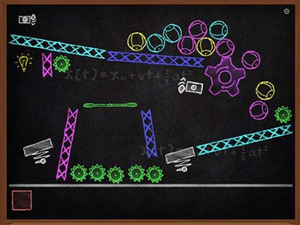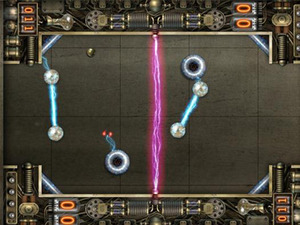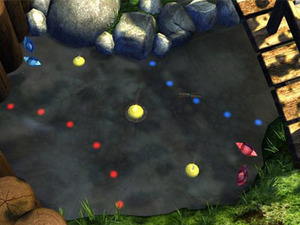
Microsoft’s future of gaming: multi-touch
South by Southwest 2010 We’re at South by Southwest Interactive (SXSW) in Austin, Texas, a big conference event focusing on emerging technology, new digital schemes and web technology. It has a reputation for being a place where interesting new ideas and trends are shared, so we thought we’d see what we could find.SXSW might be the kind of place where most people have Macbooks, iPhones and iPad pre-orders in place, but Microsoft is here in force, with many employees giving talks and presentations about their projects. Two of the most interesting we attended looked at ways in which Microsoft is planning on pushing game development, firstly in terms of touch-screen games, and secondly with its XNA game development tools.
Multi-touch
The iPhone might be the device that springs to mind when you think of touch-screen interfaces, but Microsoft’s Amish Patel, the Program Manager for the Windows Touch team, was keen to point out that it’s been working on touch technology for eight years. As a result, Microsoft supports touch across a huge range of devices, from laptops to screens and it also supports it in a range of development environments. Patel revealed both DirectX and Flash 10.1 will support touch-screen inputs for gaming.Patel and his panel co-presenter Philip Glofcheskie then demonstrated three touch-screen games that ship with Windows 7 touch-screen devices. Microsoft out-sourced the development of the games to Fuel Industries, where Glofcheskie works as Creative Director. Their brief from Microsoft was to make games that encouraged people to use the touch-screen part of their computers and that were a “delightful experience.” All the games were coded using the Windows Presentation Foundation (WPF), which is built on DirectX and .NET, and supports mulit-touch inputs.
We’re taught not to touch computer screens, and Microsoft wanted these new touch games to help people get over that reluctance. It was also keen that the games took advantage of all multi-touch features, and made the game accessible to a wide audience. Key to this was that the games needed to make users feel “confident and connected, [with] no touch left behind.” This means they needed to be designed to be intuitive, and responsive – so the user needs to know the game has registered their touch.
In addition to these demands from Microsoft, Glofcheskie talked about the major challenges touch-screens present to game designers: visual occlusion (if your hands are on the screen, they might block information out), screen size and orientation, and how to handle multi-user, multi-player touch screen gaming.
The first game they demoed was called Rebound. The team at Fuel took a game that was well known – Pong – and wanted to use touch to simulate a tactile feeling to make gamers feel more involved. Instead of using static bats as in the classic version of the game, the idea was to have an elastic band between two fingers, and to allow you to use this flick the ball at the other player.
The team then added an electrical theme, so the elastic band is actually an arc of electricity, which the players power up by touching two points on the screen that are close together. Glofcheskie and Patel then showed the game in action – there were plenty of neat touches to the action and it looked like a surprising amount of fun for a free game.
 The next game was Garden Pond, which Glofcheskie characterised as “far more experiential and laid back.” The team wanted to use touch to simulate water, and manipulating things using ripples and waves, so the game takes an aerial view of an oriental water garden with origami swans and boats floating on it. The game then sets challenges for you to complete, such as guiding them round an obstacle course or setting them on fire using floating candles. Again, the game design was full of great touches – we especially liked the fact you could move the scoreboard around the screen just by touching and dragging it.
The next game was Garden Pond, which Glofcheskie characterised as “far more experiential and laid back.” The team wanted to use touch to simulate water, and manipulating things using ripples and waves, so the game takes an aerial view of an oriental water garden with origami swans and boats floating on it. The game then sets challenges for you to complete, such as guiding them round an obstacle course or setting them on fire using floating candles. Again, the game design was full of great touches – we especially liked the fact you could move the scoreboard around the screen just by touching and dragging it. Finally was Blackboard, a puzzle game based on mechanical things such as spinning gears. You’re a scientist looking at a blackboard, and you need to guide balloons around using a tilt mechanism. To us it looked the weakest of the three, lacking the charm of Garden Pond and the action of Rebound. We certainly preferred the sound of one of the rejected ideas, which Glofcheskie described as “a Godzilla-esque game, where you wander around a city squashing stuff… but it didn’t really fit the brand messaging Microsoft wanted.”

MSI MPG Velox 100R Chassis Review
October 14 2021 | 15:04












Want to comment? Please log in.